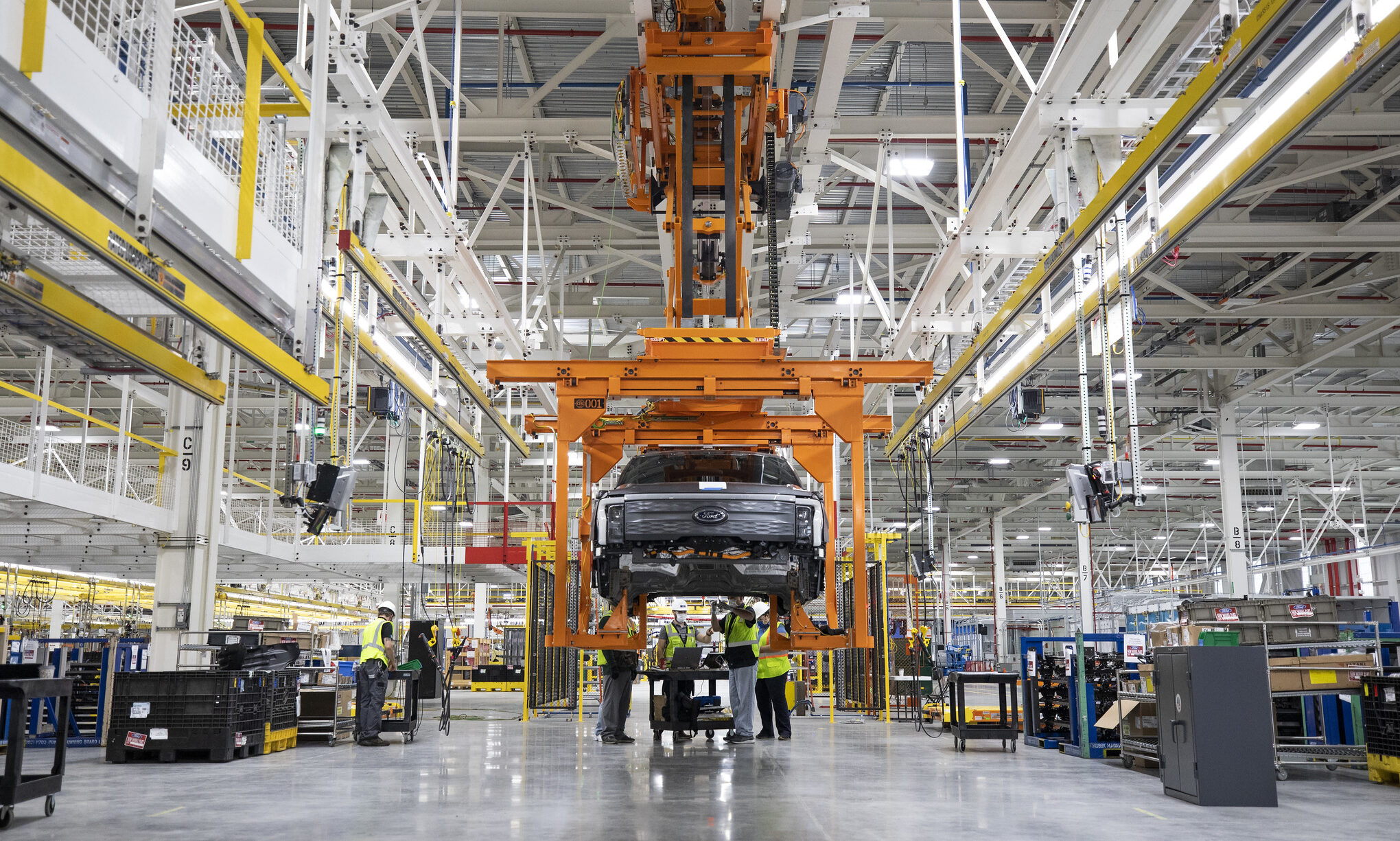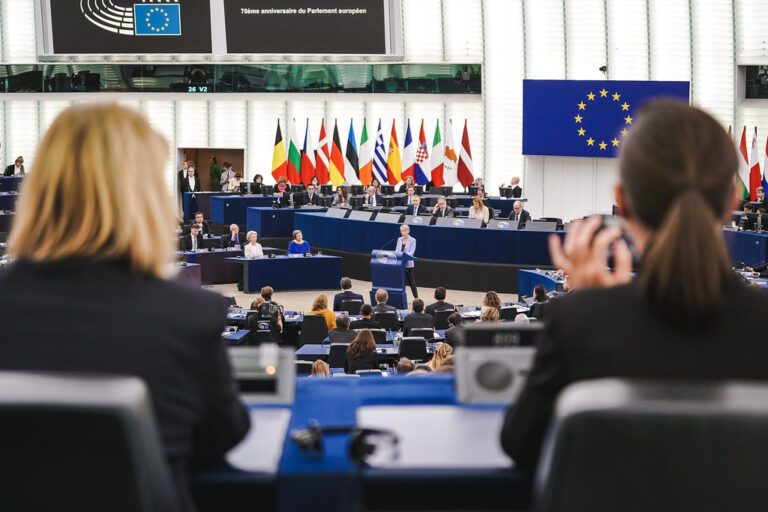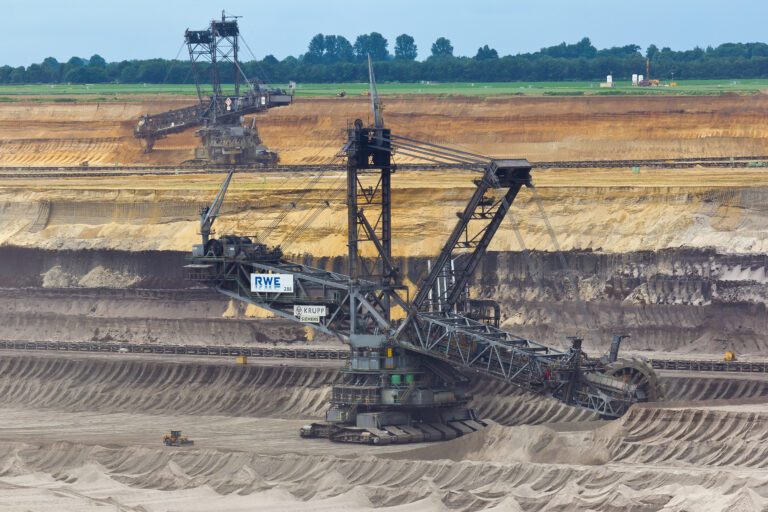
This article was originally published with China Dialogues at LSE Ideas and is republished here with the permission of the author. The article is part of an ongoing collaboration between LSE Ideas and CHOICE.
Economic nationalism has become the new game in town. Across the globe, countries embrace trade barriers, industrial policies, and other mercantilist measures to build self-reliance by protecting domestic industries and enhancing the resilience of global supply chains. While China has long engaged selectively with the neoliberal order, the United States under Donald Trump is now seeking to restructure the very system it once championed. Caught between these two powers, the rest of the world – including the European Union – is left navigating a rapidly shifting (geo)economic landscape.
A case in point is the EU’s October 2024 decision to impose definitive duties on Chinese battery electric vehicles (BEVs), following its anti-subsidy investigation aimed at protecting the competitiveness of Europe’s automotive industry. Despite some signs of a tentative thaw – such as discussions over minimum pricing in lieu of tariffs, and the partial lifting of Chinese sanctions on EU officials – a deeper recalibration of the EU’s China policy remains unlikely. If anything, concerns over Chinese overcapacity and its export-oriented industrial policies have intensified, even as studies suggest that fears of trade diversion following China’s exclusion from the US market may be overstated.
Nevertheless, few dispute that surging imports of subsidized Chinese BEVs would pose a major threat to the EU’s auto industry, especially in the integrated periphery of Central and Eastern Europe (CEE), where countries such as Slovakia – currently the world’s largest producer of cars per capita – are automotive monocultures that rely heavily on automotive manufacturing for GDP growth. Fears of a potential “Detroit scenario” loom large. While the shift to electromobility is increasingly seen as inevitable – given the EU’s Fit for 55 package and the 2035 zero-emissions target for new vehicles – there is little consensus in policy-making circles on how fast or in what form the transition should occur, especially as Chinese greenfield investment grows across the Visegrád Four (V4): Slovakia, Poland, Hungary, and to a much lesser extent, the Czech Republic.
Uneven Paths: Structural Barriers to Higher Value Creation
Research has shown that job losses in the traditional segments of the automotive sector – a major concern regarding the EV transition – will, to a certain extent, be mitigated by job creation in other areas of the broadly defined automotive (including EV) industry. Yet, the distribution is likely to be uneven. Suppliers of internal combustion engine components such as powertrains and gearboxes are especially exposed, as EVs require significantly fewer parts. This is particularly significant in the V4, where much of the employment in the automotive sector remains concentrated in these vulnerable segments.
Given that batteries account for up to 40 percent of an EV’s value, V4 states have every incentive to attract investment in battery production, recycling, and ancillary activities. While concerns have been raised about the lack of higher value-added activities in Chinese investments, such as R&D, this pattern is not unique to China. German firms, which have dominated foreign direct investment (FDI) into the V4 auto sector since the 1990s, have similarly prioritized low-value activities, rendering the V4 states (and CEE more broadly) dependent market economies within the integrated periphery of the European auto industry.
Indeed, the broader structural issue is the “integrated periphery” status of the V4 region. Defined by lower wages, surplus labor, and export-oriented production, these economies remain heavily reliant on decisions made by foreign original equipment manufacturers (OEMs), most of whom retain high-value functions – like design and strategic planning – at home. Domestic firms, in contrast, remain stuck in low-cost, tier-three supplier roles.
Exceptions do, of course, exist. Škoda Auto, as a semi-autonomous brand within the Volkswagen Group, maintains its own R&D capacity. Start-ups such as battery manufacturers InoBat in Slovakia and ElevenEs in Serbia also offer cause for cautious optimism. InoBat, through its joint venture Gotion Inobat Batteries, has a licensing agreement with Chinese battery producer Gotion High-Tech. This is noteworthy, as licensing, joint ventures, local content, and other technology transfer requirements are often cited as examples of good practice. InoBat explicitly linked its strategy to the EU’s goal of building a domestic battery value chain and enhancing strategic autonomy – efforts supported by the Slovak Battery Alliance and championed by European Commissioner Maroš Šefčovič, coordinator of the European Battery Alliance. This approach contrasts with Hungary’s National Battery Industry Strategy, which leans heavily on FDI from East Asia.
Meanwhile, ElevenEs, has developed Europe’s first lithium-iron-phosphate (LFP) battery cell – a major breakthrough given LFP’s lower cost but greater scalability relative to the nickel-manganese-cobalt (NMC) chemistries favored in Europe. However, these start-ups and the upgrading alliances around them remain exceptions rather than the norm.
A Fragile Bargain: Chinese FDI and Geopolitical Tensions
Chinese investors differ in one key respect: their strong orientation towards exporting both components and complete assembly sets. This approach, aligned with Beijing’s broader industrial strategy, limits opportunities for local firms to integrate into supply chains or benefit from technology transfer. It also risks reducing V4 states to mere assembly lines for Chinese-sourced inputs, exacerbating value leakage. This scenario is also facilitated by the increasing preference of some German OEMs to produce in and export from China.
This is particularly problematic as the geopolitical winds shift. The EU and US are increasingly aligned in efforts to “de-risk” supply chains, even as divisions within the EU persist. The recent BEV tariff vote was telling: following a coordinated push from China and Germany to influence the outcome, several member states changed their positions. While the V4 states largely stuck to their original positions, Slovakia and Hungary joined Germany, Slovenia and Malta in voting against the tariffs – decisions shaped by both domestic economic interests and broader political alignments.
In Slovakia’s case, concerns centered on potential retaliation, particularly against German and British SUVs produced in Slovak plants. As the EU’s second-largest SUV exporter – with these vehicles making up around 78 percent of its exports to China – Slovakia’s exposure is not trivial. Its increasingly pro-Chinese, Eurosceptic government under Prime Minister Róbert Fico and his nationalist-populist SMER-SD adds another layer of complexity. Among the V4, Slovakia already has the highest final-demand exposure, and its integrated periphery status makes it particularly vulnerable to the weaponization of supply chains by China – a lesson Lithuania learned all too well following the opening of a Taiwanese Representative Office in Vilnius.
Path Ahead: Learning from the Chinese Playbook
The impact of China’s export controls on seven rare earth elements and other critical raw materials (CRMs) is already reverberating across the automotive and energy sectors. With near-total dominance over processed rare earths, especially in the heavy and medium categories, China holds significant leverage. Against this backdrop, automakers are increasingly caught in a double bind, finding themselves squeezed between US semiconductor restrictions and Chinese CRM controls.
The EU has begun to respond with a suite of de-risking tools, though actual diversification remains elusive. The evolving regulatory landscape, however, presents a timely opportunity. The EU could follow China’s lead by introducing local content requirements, tech-transfer conditions, and other incentives tied to strategic autonomy. Parallel efforts under the Critical Raw Materials Act, the Chips Act, and the Important Projects of Common European Interest – including those focused on batteries – will be crucial. Yet German automakers are unlikely to abandon their China strategies overnight, despite dwindling margins. As a result, the onus may fall on CEE suppliers and governments to push for broader sectoral changes – including a more coherent industrial strategy at the EU level, which is preferred over state-aid policies of individual member states. The challenge, as ever, will be to do so from the periphery.
Written by
Dominika Remžová
DominikaRemzovaDominika Remžová is a China Analyst at AMO, specializing in Chinese economy and industrial policy, supply chains, critical raw materials, electric vehicles and, more generally, Chinese foreign policy. In the past, she contributed to Taiwan Insight and The Diplomat, among others. Dominika is pursuing her PhD in Political Science and International Relations at the University of Nottingham. She earned her Master's degree in Taiwan Studies from the School of Oriental and African Studies (SOAS) in London and her Bachelor's degree in Chinese Studies from the University of Manchester.

